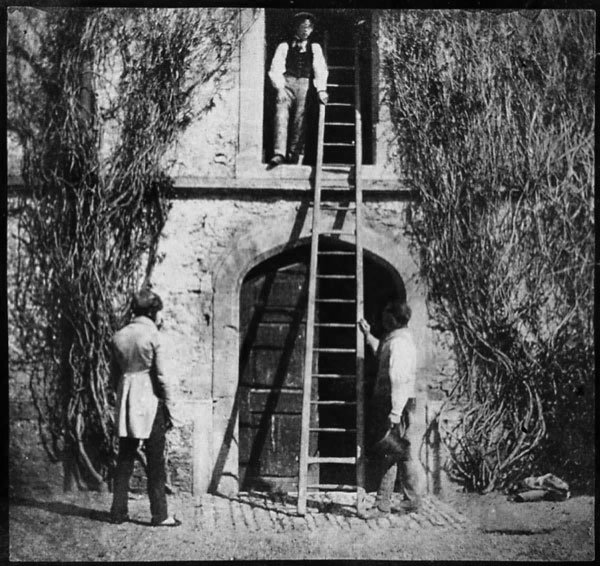|
© Copyright 2003 by the
Photography Criticism CyberArchive. All rights reserved. photocriticism.com |
 |
This printout is for reference only.
Reproduction and distribution of multiple copies prohibited. |
Archive texts:
History of Photography
The Pencil of Nature (1844-46)
Part III (cont.): PLATE XIV. THE LADDER
PORTRAITS of living persons and groups of figures form one of the most attractive subjects of photography, and I hope to present some of them to the Reader in the progress of the present work.
When the sun shines, small portraits can be obtained by my process in one or two seconds, but large portraits require a somewhat longer time. When the weather is dark and cloudy, a corresponding allowance is necessary, and a greater demand is made upon the patience of the sitter. Groups of figures take no longer time to obtain that single figures would require, since the Camera depicts them all at once, however numerous they may be: but at present we cannot well succeed in this branch of the art without some previous concept and arrangement. If we proceed to the City, and attempt to take a picture of the moving multitude, we fail, for in a small fraction of a second they change their positions so much, as to destroy the distinctness of the representation. But when a group of persons has been artistically arranged, and trained by a little practice to maintain an absolute immobility for a few seconds of time, very delightful pictures are easily obtained. I have observed that family groups are especial favourites: and the same five or six individuals may be combined in so many varying attitudes, as to give much interest and a great air of reality to a series of such pictures. What would not be the value to our English Nobility of such a record of their ancestors who lived a century ago? On how small a portion of their family picture galleries can they really rely with confidence!
